Table Of Contents:
Introduction: How To Change Your Beliefs
- Definition of beliefs and their role in shaping our lives
- The importance of having empowering beliefs
- The limitations of negative or limiting beliefs
Have you ever stopped to think about the role that beliefs play in your life? Beliefs are those thoughts and ideas that shape our perceptions of the world and ourselves.
They can be empowering, helping us to feel confident and capable, or they can be limiting, holding us back and making us feel unworthy.
Did you know that the beliefs you hold can have a major impact on your thoughts, feelings, and behaviors? It’s true! Our beliefs influence the way we see ourselves and the world around us, and they can either hold us back or propel us forward.
That’s why it’s so important to have empowering beliefs – beliefs that support and encourage us – rather than limiting beliefs that hold us back.

If you’re someone who struggles with self-doubt or low self-esteem, changing your beliefs may be just what you need to boost your confidence and start living the life you want.
And the good news is that there are techniques such as Psych-K and hypnosis that can help you reprogram your limiting beliefs and adopt more empowering ones.
So, if you’re ready to start living a more confident and fulfilling life, keep reading to learn more about the power of beliefs and how you can change them.
Understanding Your Beliefs
- Identifying your current beliefs and their origins
- Evaluating the evidence for and against your beliefs
- Understanding the impact of your beliefs on your thoughts, feelings, and behaviors
Now that you have a better understanding of the role that beliefs play in our lives, let’s dive a little deeper into the process of belief change. The first step in changing your beliefs is to identify your current beliefs and understand where they came from.
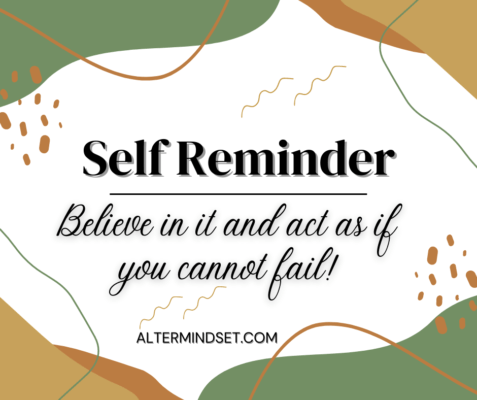
Have you ever stopped to think about where your beliefs come from? Some of them may be based on your own experiences and observations, while others may be based on things you’ve heard or been told by others. Some beliefs may be positive and empowering, while others may be negative or limiting.
It’s important to take the time to explore and understand your current beliefs, as this can give you a better sense of which ones are serving you and which ones may be holding you back.
One way to do this is to make a list of your beliefs and consider where each one came from. You might also try asking yourself questions like:
- Is this belief based on evidence or is it just an assumption?
- Does this belief support or discourage me?
- How does this belief affect my thoughts, feelings, and behaviors?
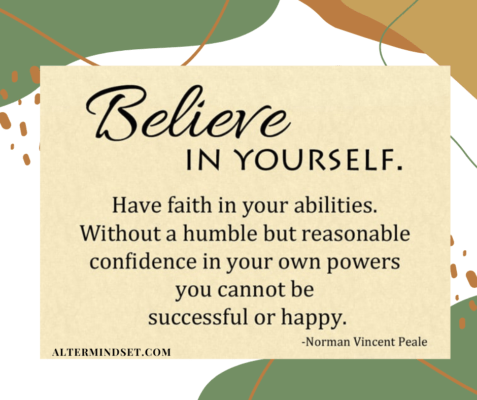
As you explore your beliefs, it’s also important to evaluate the evidence for and against each one. This can help you determine which beliefs are based on solid evidence and which ones may be more questionable.
For example, let’s say you have the belief that you’re not good at public speaking. This belief might be based on a few negative experiences you’ve had in the past, such as a presentation that didn’t go as well as you had hoped.
However, when you take the time to evaluate the evidence for and against this belief, you might realize that you’ve actually had some positive experiences with public speaking as well.
Maybe you’ve given a few successful presentations in the past, or maybe you’ve received positive feedback from colleagues or friends.

When you take the time to consider both the positive and negative evidence, you can start to see that your belief that you’re not good at public speaking might not be entirely accurate.
Understanding the impact of your beliefs on your thoughts, feelings, and behaviors is another important step in the belief change process.
By considering how your beliefs affect you, you can get a better sense of which ones may be holding you back and which ones are supporting you. You may also find it helpful to consider how your beliefs impact your relationships and interactions with others.
For example, let’s say you have the belief that you’re not good at making friends. This belief might lead you to feel anxious or self-conscious in social situations, which could in turn affect your behavior and make it more difficult for you to connect with others.
On the other hand, if you had the belief that you are friendly and likable, you might feel more confident and at ease in social situations, which could make it easier for you to make friends.
It’s important to remember that our beliefs are not fixed and can be changed over time. By taking the time to understand your beliefs and the impact they have on your life, you can begin to identify which ones may be limiting or negative and start working on replacing them with more empowering beliefs.
Strategies for Changing Your Beliefs
- Psych-K: An overview of the Psych-K process and how it can be used to reprogram limiting beliefs
- Hypnosis: An overview of hypnosis and how it can be used to change beliefs and behaviors
- Other strategies: Other techniques and strategies for changing beliefs, such as cognitive-behavioral therapy and mindfulness
Once you’ve identified your limiting beliefs and understand the impact they have on your life, the next step is to start working on how to change your beliefs into more empowering beliefs. There are a number of strategies and techniques that can help you do this, including Psych-K, hypnosis, and other therapies.
Psych-K is a process that combines elements of psychology, kinesiology, and energy healing to help people reprogram their limiting beliefs. The process involves using muscle testing to identify and address imbalances in the body’s energy systems, which can be caused by negative thoughts and beliefs.
By using Psych-K techniques, you can identify and release limiting beliefs and replace them with more empowering ones.
Hypnosis is another technique that can be used to change beliefs and behaviors. During hypnosis, you enter into a state of relaxation and heightened suggestibility, which allows you to easily accept positive suggestions and make changes to your beliefs and behaviors.
Hypnosis can be a powerful tool for belief change and can be especially helpful for overcoming phobias, breaking bad habits, and improving self-confidence.
There are also other therapies and techniques that can be used to change beliefs, such as cognitive-behavioral therapy (CBT) and mindfulness. CBT is a form of therapy that helps people identify and change negative or distorted thought patterns that can lead to negative emotions and behaviors.
Mindfulness involves paying attention to the present moment in a non-judgmental way, which can help people become more aware of their thoughts and beliefs and learn to let go of those that are negative or limiting.
Practical Application of Belief Change Techniques
- Steps for identifying and challenging limiting beliefs
- Techniques for replacing limiting beliefs with empowering ones
- Practice exercises and activities to reinforce new beliefs
Once you’ve chosen a strategy or technique for changing your beliefs, the next step is to start putting it into practice. Here are a few steps you can follow to start applying belief change techniques in your own life:
- Identify your limiting beliefs: Take some time to think about the beliefs that are holding you back or making you feel unworthy. Write them down and consider where they came from and the evidence for and against them.
- Challenge your limiting beliefs: Once you’ve identified your limiting beliefs, it’s important to challenge them and start replacing them with more empowering beliefs. You can do this by questioning the evidence for and against your limiting beliefs and looking for alternative explanations or perspectives. For example, if you have the belief that you’re not good at public speaking, you might try to recall times when you did well or received positive feedback on your presentations. This can help you see that your belief is not entirely accurate and give you the confidence to try again.
- Practice replacing your limiting beliefs with empowering ones: Once you’ve identified and challenged your limiting beliefs, it’s time to start replacing them with more empowering ones. This might involve repeating affirmations or mantras to yourself, writing down positive statements about yourself, or visualizing yourself succeeding in a specific area. The more you practice and reinforce your new beliefs, the more they will become a part of your thought patterns and habits.
- Seek support: Changing your beliefs can be a challenging process, and it’s often helpful to have the support of others. Consider working with a coach, therapist, or mentor who can help you identify and challenge your limiting beliefs and offer guidance and encouragement along the way.
Overcoming Obstacles to Belief Change
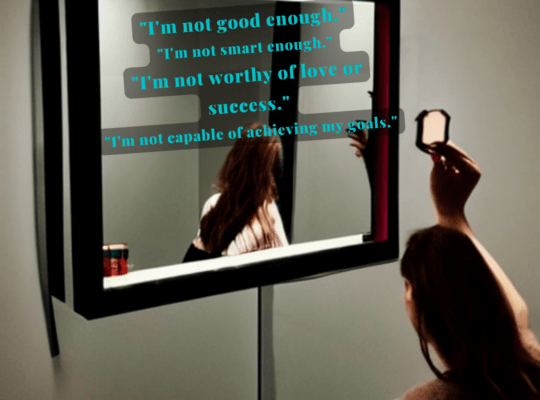
- Common challenges to belief change and how to overcome them
- Strategies for maintaining and reinforcing new beliefs
As you work on changing your beliefs, you may encounter some challenges or obstacles along the way. Here are a few common challenges to belief change and some strategies for overcoming them:
Resistance: It’s natural to feel resistance when you’re trying to change your beliefs, especially if they’ve been a part of your thought patterns for a long time. To overcome resistance, try to identify the root cause of your resistance and address it directly.
For example, if you’re resistant to changing your belief that you’re not good at public speaking because you’re afraid of failing, you might try to reframe your thinking by reminding yourself that failure is a natural part of learning and growth.
.
- Lack of motivation: It’s hard to change your beliefs if you’re not motivated to do so. If you’re struggling to find the motivation to change your beliefs, try to tap into your values and goals. What are the things that are most important to you in life? How do your limiting beliefs hold you back from achieving your goals? By connecting your belief change process to your values and goals, you can find the motivation and purpose you need to keep going.
- Lack of consistency: Changing your beliefs requires consistent effort and practice. If you’re struggling to make progress, it might be because you’re not being consistent in your efforts. To overcome this challenge, try setting specific, achievable goals for yourself and tracking your progress. You might also consider finding anbenefits of belief h accountability partner who can help you stay on track and motivate
Conclusion and Next Steps
- The benefits of belief change and the role of persistence and practice
- Ideas for continuing to improve and grow through belief change
Belief change can be a challenging but rewarding process, and the benefits are well worth the effort. By changing your beliefs, you can improve your self-confidence and self-esteem, overcome limitations and fears, and live a more fulfilling and purposeful life.
However, it’s important to remember that belief change is a journey, not a destination. It requires persistence and practice to maintain and reinforce your new beliefs.
To continue improving and growing through belief change, consider setting specific goals for yourself and tracking your progress. You might also consider finding a coach or mentor who can offer guidance and support along the way.
By taking the time to understand your beliefs and the role they play in your life and by using techniques and strategies like Psych-K, hypnosis, and cognitive-behavioral therapy to change your limiting beliefs, you can take control of your thoughts, feelings, and behaviors and start living the life you want.
Remember to be patient and persistent, and don’t be afraid to seek support when you need it. With time and practice, you can experience the transformative power of belief change and continue to grow and improve for years to come.
Here Are Some Frequently Asked Questions:
1. What are beliefs and why are they important?
Answer: Beliefs are thoughts and ideas that shape our perceptions of the world and ourselves. They can be empowering, helping us to feel confident and capable, or they can be limiting, holding us back and making us feel unworthy. Beliefs are important because they influence the way we see ourselves and the world around us, and they can either hold us back or propel us forward.
2. How do I know if I have limiting beliefs?
Answer: Limiting beliefs are thoughts and ideas that hold us back or make us feel unworthy. Some common examples of limiting beliefs include: “I’m not good enough,” “I’m not smart enough,” “I’m not worthy of love or success,” and “I’m not capable of achieving my goals.” If you find that you frequently have negative or self-defeating thoughts, or if you struggle with self-doubt or low self-esteem, you may have limiting beliefs that are holding you back.
3. How can I change my beliefs?
Answer: There are a number of techniques and strategies that can help you change your beliefs, including Psych-K, hypnosis, cognitive-behavioral therapy, and mindfulness. To change your beliefs, you’ll need to first identify your current beliefs and understand where they came from. Then, you’ll need to challenge and evaluate the evidence for and against your beliefs, and start replacing them with more empowering ones. This process requires persistence and practice, and it can be helpful to have the support of a coach, therapist, or mentor.
4. Can I change any belief I have?
Answer: In theory, it’s possible to change any belief you have. However, it’s important to remember that belief change is a process and it can take time and effort to make lasting changes. Some beliefs may be more deeply ingrained or harder to change than others, and it’s important to be patient and persistent in your efforts.
5. How long does it take to change a belief?
Answer: The amount of time it takes to change a belief will vary depending on the belief itself and the techniques and strategies you’re using to change it. Some beliefs may change relatively quickly with the right techniques and support, while others may take longer to shift. It’s important to be patient and persistent in your efforts and to remember that belief change is a journey, not a destination.
MORE FAQs:
6. How to change my beliefs on my own, or do I need the help of a coach or therapist?
Answer: It’s possible to change your beliefs on your own, but it can often be helpful to have the support and guidance of a coach or therapist. A coach or therapist can help you identify your limiting beliefs, challenge them, and work on replacing them with more empowering ones. They can also provide guidance and support as figure out how to change your beliefs.
7. How do I maintain my new beliefs once I’ve changed them?
Answer: Maintaining your new beliefs once you’ve changed them requires persistence and practice. It can be helpful to set specific goals for yourself and track your progress, and to find ways to reinforce your new beliefs on a daily basis. This might involve repeating affirmations or mantras to yourself, writing down positive statements about yourself, or visualizing yourself succeeding in a specific area.
8. What if I struggle to change my beliefs or experience setbacks along the way?
Answer: It’s natural to struggle or experience setbacks when you’re learning how to change your beliefs, and it’s important to be patient and persistent in your efforts. If you’re struggling to make progress, it might be helpful to seek the support of a coach or therapist or to try different techniques or strategies to find what works best for you. Remember that belief change is a journey, and it’s okay to take breaks or adjust your approach if you need to.
9. How can I continue to improve and grow through belief change?
Answer: To continue improving and growing through belief change, it’s important to set specific goals for yourself and track your progress. You might also consider finding a coach or mentor who can offer guidance and support as you work on improving and growing. It can also be helpful to continue learning and exploring new techniques and strategies that teach how to change your beliefs and stay open to new ideas and perspectives.
If you like this content and want to learn another powerful strategy to help change limiting beliefs so you can transform your life then check out this ultimate Guide to Creating a Vision Board. Or maybe you are interested in reading my review on the 10 Powerful Tips To Manifest Your Dream Life Using The Law Of Attraction

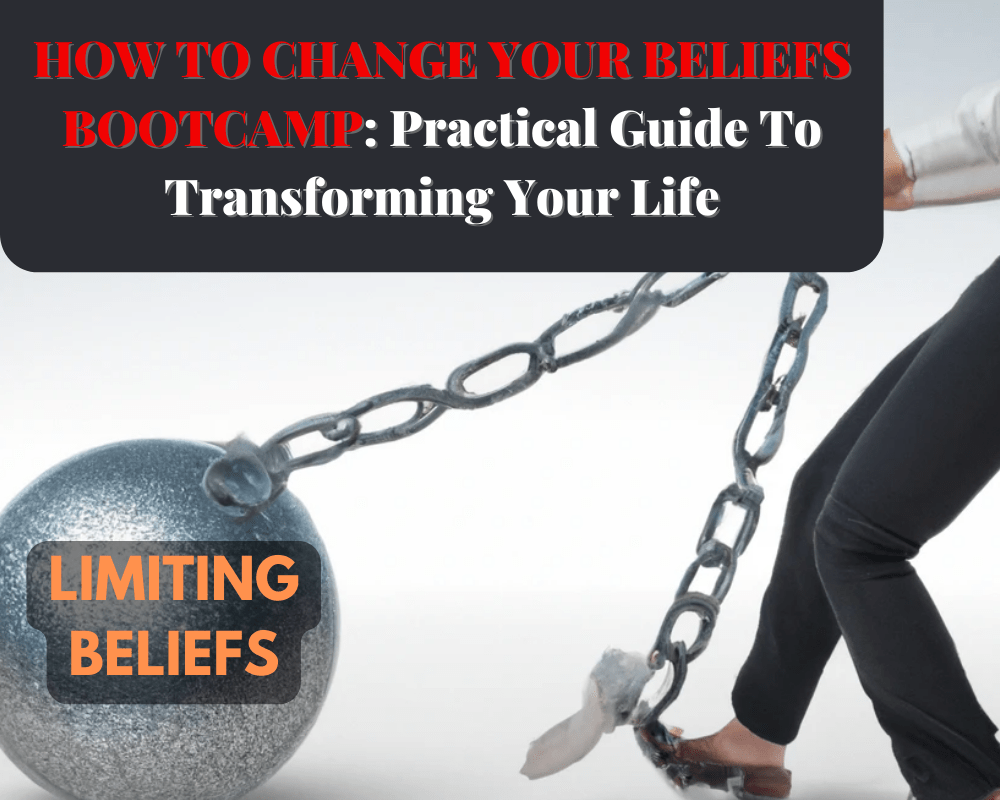
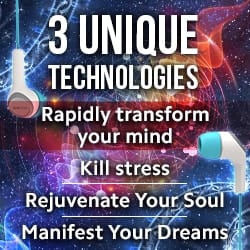



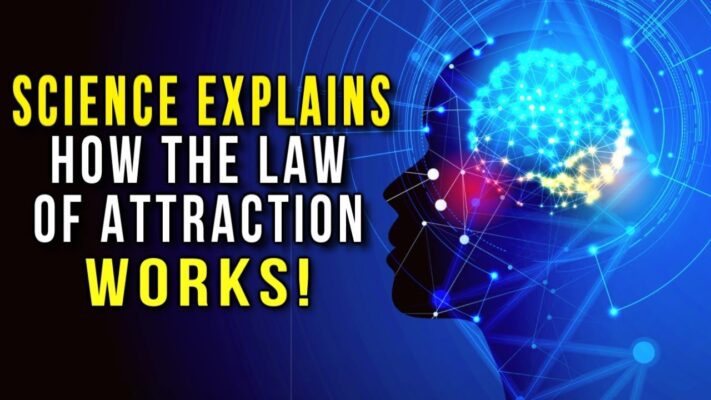



Leave a Reply